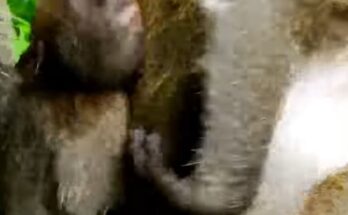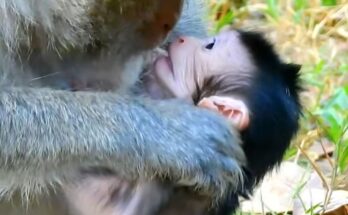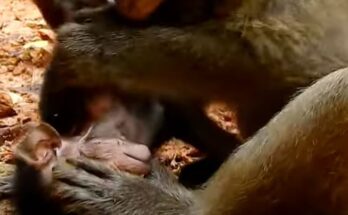The behavior of animals, particularly in cases like a mother monkey hitting her baby, often reflects instinctive responses and serves various purposes, even when it appears harsh or painful. In the animal kingdom, such actions are typically not driven by malice but by survival instincts and attempts to discipline or protect offspring.
One common reason for this seemingly cruel behavior is the need to discipline the baby monkey. Baby monkeys are naturally curious and may wander into dangerous situations or fail to follow the group’s rules. In such cases, the mother may hit or reprimand the baby to teach it about boundaries, threats, or appropriate behavior within the troop. This form of discipline ensures that the baby learns essential survival skills, such as recognizing predators, avoiding hazards, or understanding social hierarchies.
Another reason could be frustration or stress experienced by the mother monkey. Like humans, animals can experience stress from factors like lack of food, competition within the group, or environmental threats. A mother under duress might exhibit aggressive behaviors, including striking her baby. While not ideal, this behavior reflects the challenges of surviving in the wild.
Additionally, the hit may appear more painful than it actually is. Monkeys have tough skin and robust bodies designed for rough interactions, so what looks severe to humans may not be as harmful to the baby.
It is also important to recognize that such behaviors are rare in healthy and well-functioning monkey troops. When observed frequently, it could signal underlying issues, such as environmental stress, lack of resources, or disruptions in the troop’s dynamics.
Ultimately, while the sight of a mother monkey hitting her baby may be distressing, it often serves a purpose rooted in survival, teaching, or managing stress in their complex social systems.


